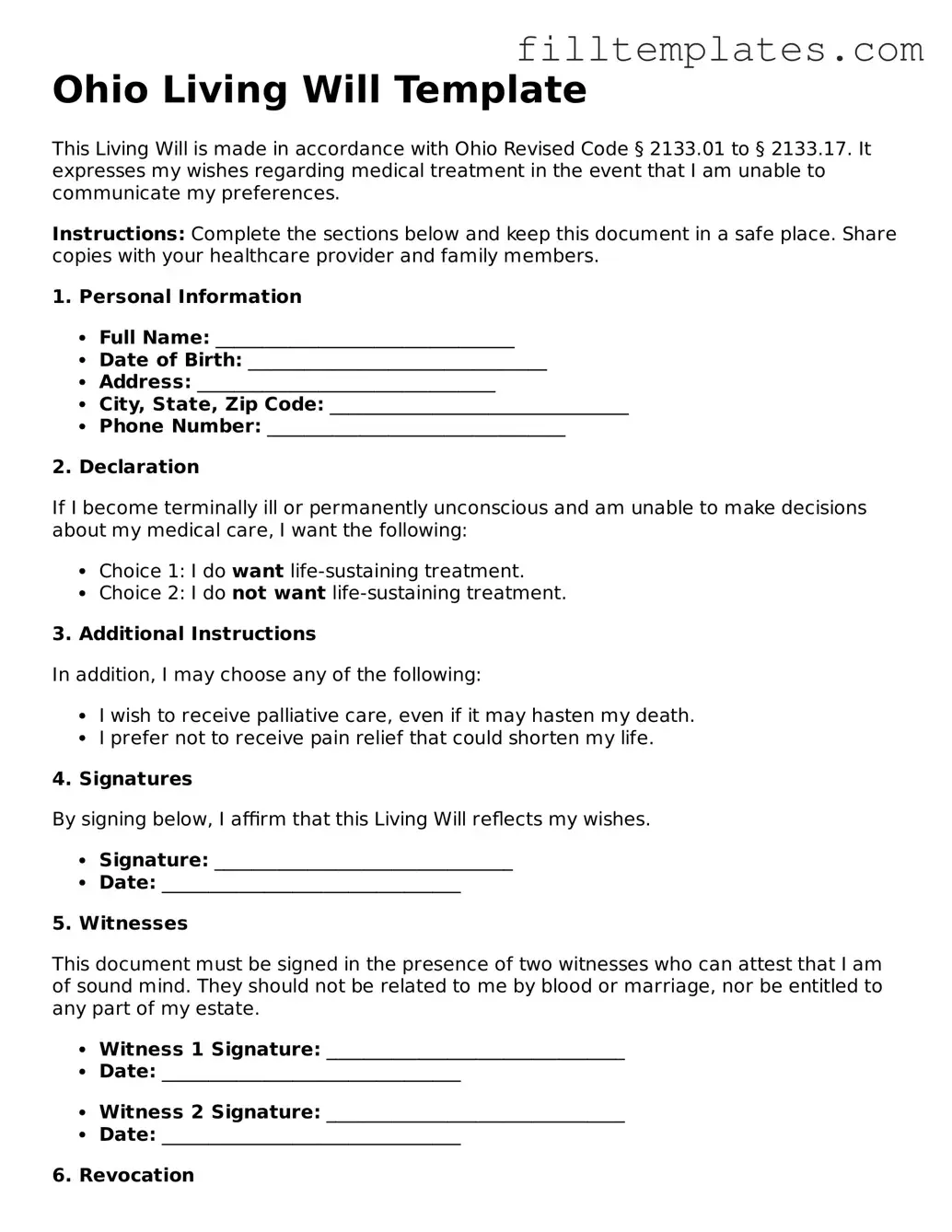Ohio Living Will Template
This Living Will is made in accordance with Ohio Revised Code § 2133.01 to § 2133.17. It expresses my wishes regarding medical treatment in the event that I am unable to communicate my preferences.
Instructions: Complete the sections below and keep this document in a safe place. Share copies with your healthcare provider and family members.
1. Personal Information
- Full Name: ________________________________
- Date of Birth: ________________________________
- Address: ________________________________
- City, State, Zip Code: ________________________________
- Phone Number: ________________________________
2. Declaration
If I become terminally ill or permanently unconscious and am unable to make decisions about my medical care, I want the following:
- Choice 1: I do want life-sustaining treatment.
- Choice 2: I do not want life-sustaining treatment.
3. Additional Instructions
In addition, I may choose any of the following:
- I wish to receive palliative care, even if it may hasten my death.
- I prefer not to receive pain relief that could shorten my life.
4. Signatures
By signing below, I affirm that this Living Will reflects my wishes.
- Signature: ________________________________
- Date: ________________________________
5. Witnesses
This document must be signed in the presence of two witnesses who can attest that I am of sound mind. They should not be related to me by blood or marriage, nor be entitled to any part of my estate.
- Witness 1 Signature: ________________________________
- Date: ________________________________
- Witness 2 Signature: ________________________________
- Date: ________________________________
6. Revocation
I understand that I can revoke this Living Will at any time, either orally or in writing.
Document completed on: ________________________________
